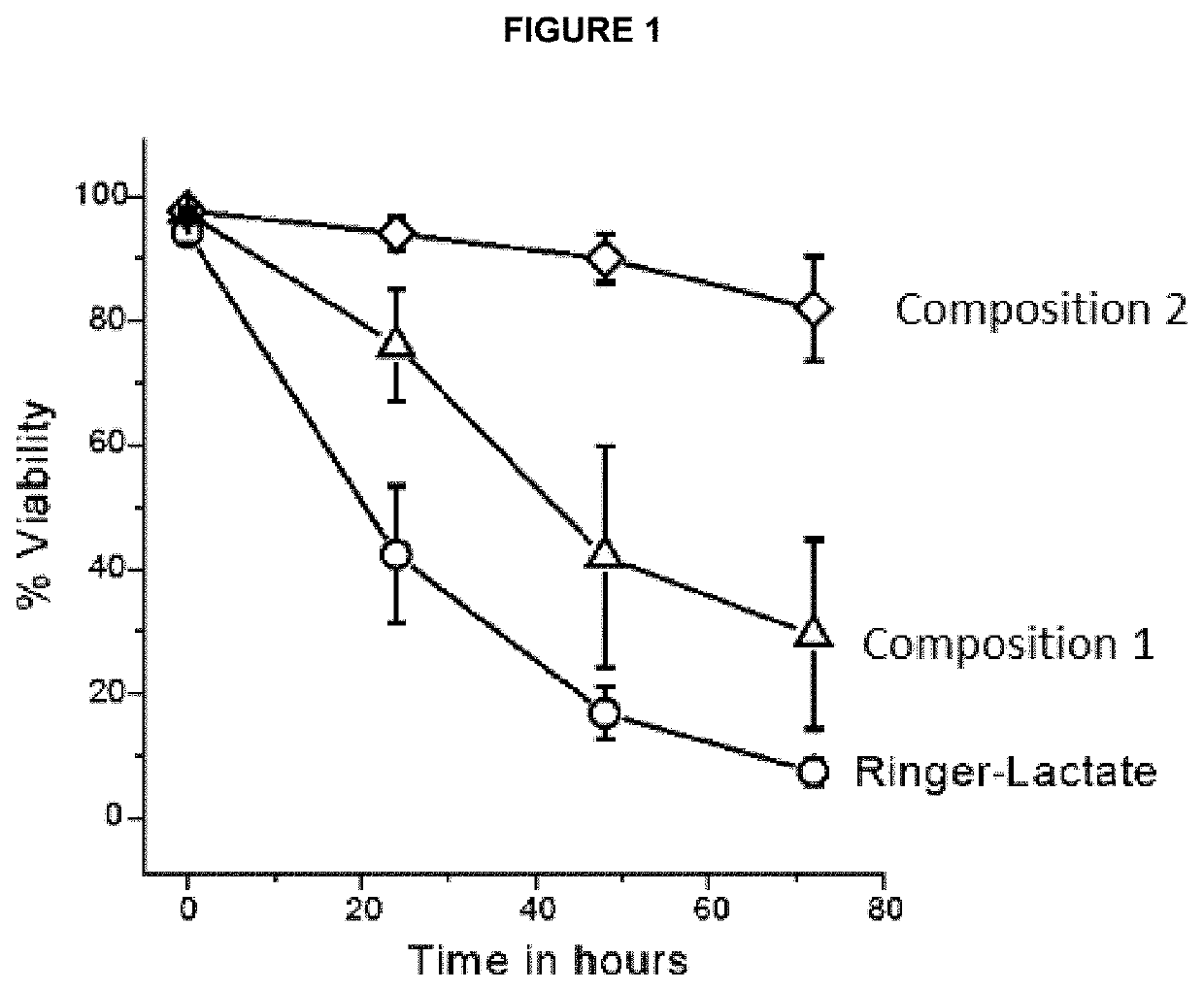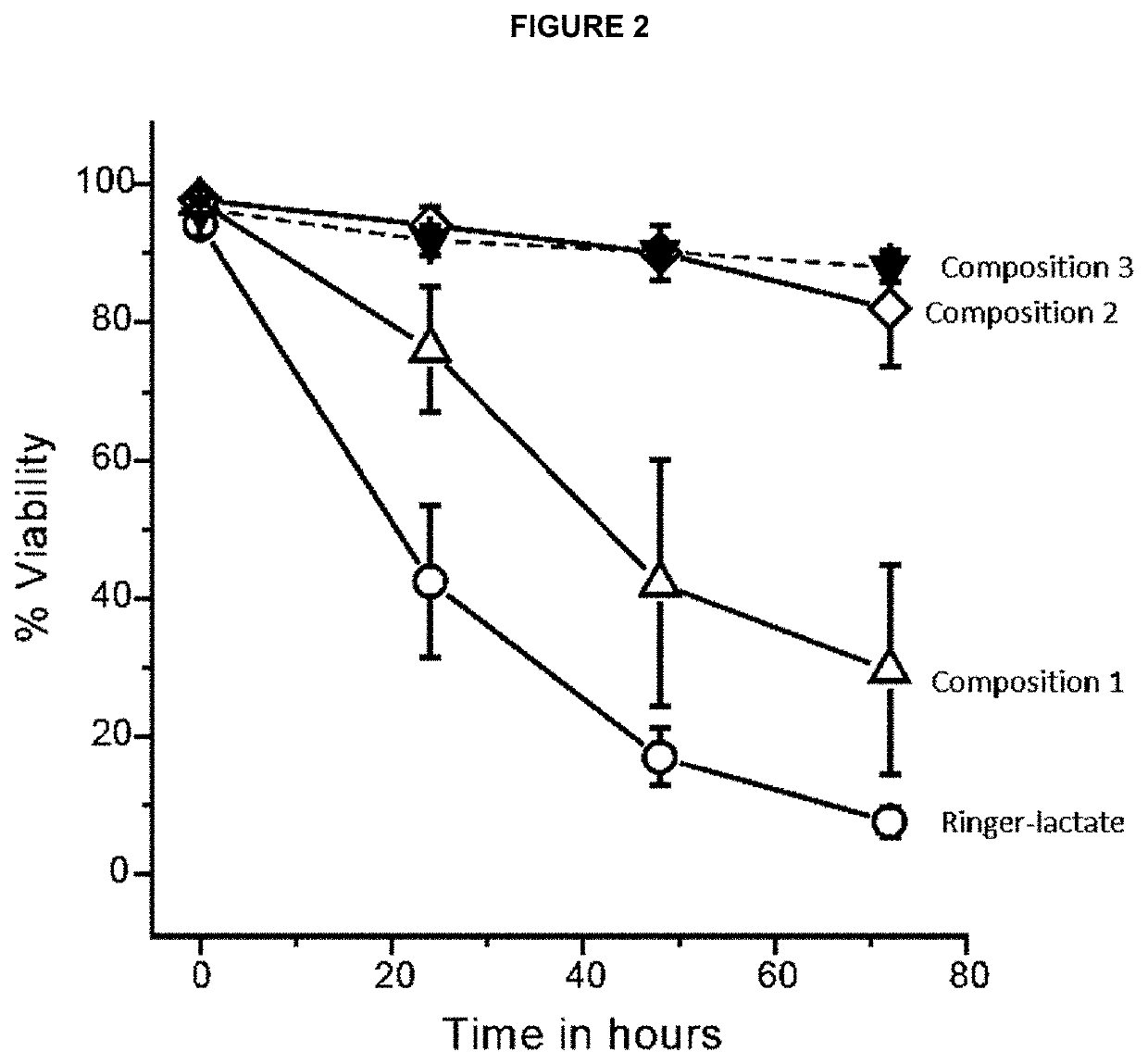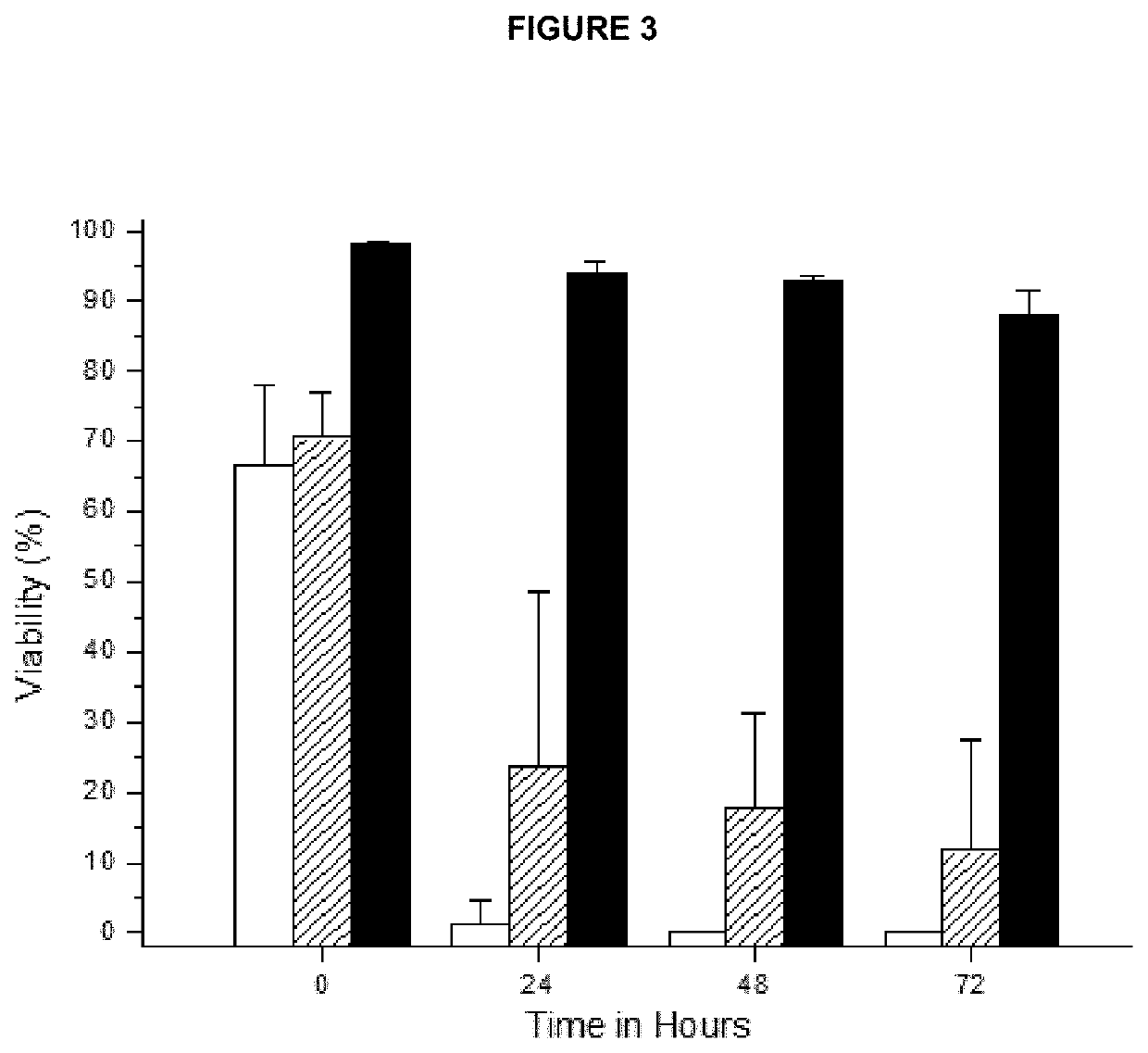Method for obtaining an enriched population of functional mesenchymal stem cells, cells obtained thereof and compositions and comprising the same
a technology cells, applied in the field of obtaining an enriched population of functional mesenchymal stem cells, cells obtained thereof and compositions and comprising the same, can solve the problems of inability to direct collection in situ of such a large quantity from bone marrow, less treatment efficiency, and more expensive and logistically complicated
- Summary
- Abstract
- Description
- Claims
- Application Information
AI Technical Summary
Benefits of technology
Problems solved by technology
Method used
Image
Examples
example 1
a Population of Functional Mesenchymal Stem Cells According to the Method of the Invention
[0226]Bone marrow aspirate subjected to a protocolized anticoagulant procedure is the cellular source for obtaining the MSCs used to obtain the compositions of the example. The bone marrow aspirate was processed within 24 hours after its extraction.
[0227]The process of obtaining MSCs approximately lasts 21 to 28 days.
[0228]In the first step the mononuclear cell fraction (MNCs) was selected with Ficoll density gradient. Subsequently, a cell viability study was carried out by Trypan Blue exclusion technique: mononuclear cells (MNCs) must have a viability ≥70% to start with culture. MNCs were seeded in culture flasks containing DMEM+20% FBS (if bacterial contamination problems are expected, add 0.5% gentamycin), and were incubated at 37° C. under 10% CO2. Every 3 or 4 days the appearance of the cell monolayer and the confluence (% of the culture surface occupied by the cells) were observed with th...
example 2
ons Comprising an Enriched Population of Functional Mesenchymal Stem Cells, Obtained According to the Method of the Invention
[0237]The effects of several compositions on cell viability along 3 days storage under hypothermic conditions (2-8° C.) in the functional characteristics of the enriched population of cryopreserved and restored functional mesenchymal stem cells obtained in Example 1, were investigated.
[0238]Three different media were used to condition the MSCs for transport, Ringer-Lactate solution, SSP+ platelet additive solution and Hypothermosol-FRS, of which compositions are shown in Table 1.
[0239]The following functional actions were investigated combining the three solutions:[0240]1. The K concentration of the medium was increased in order to favor K+ pumping through the membrane Na / K ATPase into the cells and restoration of the alkali-ion gradients, which dissipate because of the inhibition of the plasma membrane Na / K ATPase due to lowering temperature. In addition, the...
example 3
and Characterization of a Composition Comprising an Enriched Population of Functional Mesenchymal Stem Cells, Obtained in Example 1
[0251]A study of 7 batches originated from seven different donors, of compositions comprising an enriched population of functional MSCs, were prepared with the isotonic medium with trolox, composition 3, according to Example 2, directly after obtaining the cells as described in Example 1, according to the method of present invention, was carried out, and a group of parameters were evaluated, in order to:[0252]prove that the enriched population of functional mesenchymal stem cells, obtained in Example 1, according to the method of the invention are suitable for application in therapy[0253]prove that the enriched population of functional mesenchymal stem cells, obtained in Example 1, preserve the typical characteristics of MSCs defined by the Society for Cellular Therapy (ISCT) (Dominici at al., Cryotherapy, 2006, vol 8, No 4, 315-317); (Wuchter et al, Cry...
PUM
| Property | Measurement | Unit |
|---|---|---|
| temperature | aaaaa | aaaaa |
| temperature | aaaaa | aaaaa |
| temperature | aaaaa | aaaaa |
Abstract
Description
Claims
Application Information
 Login to View More
Login to View More - R&D
- Intellectual Property
- Life Sciences
- Materials
- Tech Scout
- Unparalleled Data Quality
- Higher Quality Content
- 60% Fewer Hallucinations
Browse by: Latest US Patents, China's latest patents, Technical Efficacy Thesaurus, Application Domain, Technology Topic, Popular Technical Reports.
© 2025 PatSnap. All rights reserved.Legal|Privacy policy|Modern Slavery Act Transparency Statement|Sitemap|About US| Contact US: help@patsnap.com



